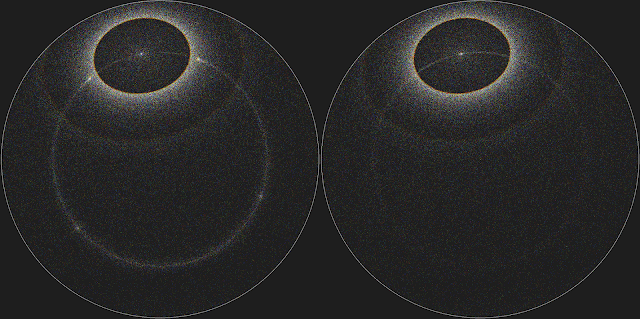At the 19th of January 2021, Jarda Fous (the most active diamond dust observer in Czechia as of now) was planning a trip to Boží dar at Ore mountains where he managed to capture a doubled CZA. Temperature was oscillating between -10 and -8 degrees Celsius, low stratus clouds were hanging atop of the Neklid ski slope and snow guns were at full blast.
GPS coordinates are as follows: N 50°24.24398', E 12°56.31133'
All pictures were taken between 09:15 and 11:30 UTC. Doubled CZA was observed at 10:55 UTC. Jarda used Nikon D7200 with 8mm fisheye lens for wide angle images and Nikkor 18-105 f/3,5-5,6G ED VR for details.
At first, ice fog with low quality ice crystals only managed to conjure up a 22 degree halo with pahelia.
Later a whole myriad of halos developed - among the 22 degree halo and parhelia, a parhelic circle, colourful CZA with aforementioned doubling, 120 degree parhelia, upper tangent arc with uppercave Parry, upper Tape arcs, supralateral arc, 46 degree halo, Moilanen arc and helic arc could be seen as well. Kern was not observed, nor does it show on pictures and stacks.
Looking forward to all of your comments and remarks.





















